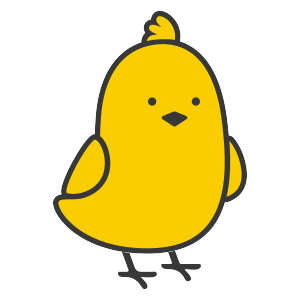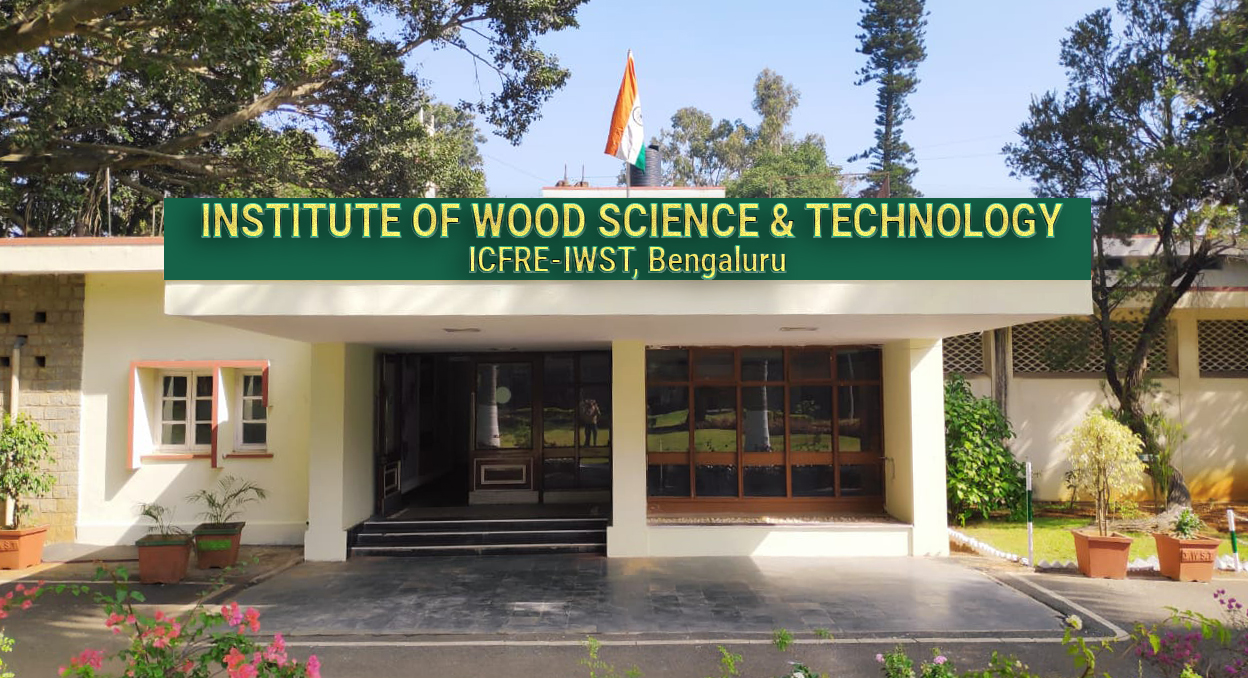Management of Pests and Dieseases
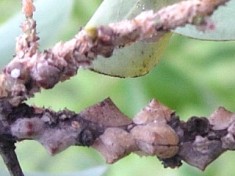
Subabul logs attacked by Bostrychids
Bio-ecological studies of the coccid, Inglisia bivalvata and Sissetia sp. which causes die-back and mortality of sandal saplings and trees have been conducted and control measures developed. Many new insecticides including neem formulations were evaluated against scales and mealy bugs on sandal and Imidacloprid, Metasystox, chlorpyriphos and Deltamethrin were found superior in containing the pests.
Control of Odontotermes sp. attacking sandal, teak and other trees, using Chlorpyriphos formulations have been standardized. Package of practices have been developed for the control of lac insect Kerria lacca attacking sandal and Acacia auriculiformis trees.
The causative insect for the mortality of Ceiba pentandra has been identified as Batocera rufomaculata and damages in the timber has been estimated.

Paratachardina silvestri (Mohdhasan)
The teak trunk borer Alcterogystia (Cossus) cadambae, is a major pest in teak plantations in the heavy rainfall tracts of Karnataka, Kerala and also Tamil Nadu. The value of much of teak timber reaching the depots is reduced due to the irregular tunnels and hollowness in the heartwood. It is estimated that upto 20% timber are damaged by the pest attack. The bioecological aspects of the teak borer have been studied and management methods using trapping and nematode application is formulated.
An IPM strategy giving importance to cultural control has been advocated for the management of teak defoliators. Larva of Alcterogystia cadambae inside the teak heartwood
The oil of Eucalyptus and also its high boiling fractions have been found very effective in killing the growing stages of the noxious weed, Parthenium hysterophorus.
Compatibility of Neem cake with other bio-fertilizers like VAM and Rhizobium was experimentally proved for the management of Babul whitefly and spiraling whitefly and other sucking pests on important forest seedlings.
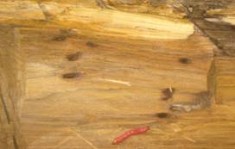
Among the whiteflies, the spiralling whitefly, Aleurodicus dispersus has been found infesting more than 200 host plants in Western Ghats. Severe infestation results in death of seedlings and young plants. The important tree species infested by this whitefly are Euclyptus spp., Tectona grandis, Santalum album, Michelia champaca, Polyalthia longifolia, Pongamia pinnata, Bauhinia variegata, Eugenia jambolana, Thespesia populnea etc. Basal application of neem cake along with pongam cake and vam; foliar spray of neem seed oil alone or in combination with synthetic insecticides like chlorpyriphos and monocrotophos; application of Biomite, dimethoate and profenphos were recommended for its control in nurseries. Commercial neem formulations were also found effective to contain this whitefly.
The insect pest management potential of Chromolaena odorata, Lantana camera, Clerodendrum inerme and Persea macrantha against defoliating pests of teak has been evaluated and insecticidal property of Clerodendron inerme and Persea macrantha are reported for the first time.
Anti-fungal efficacy of a new dye substance from Persea macrantha bark extract has been studied against pathogens of some important seedling diseases using disc diffusion method. Bark extract showed significant anti-fungal potential against Fusarium oxysporum and Rhizoctonia solani.
Phytosanitary aspects of forest seeds investigated and damage by forestry seed pests assessed. Package of practices for seed storage is formulated
Sandal pest management by utilization of biocontrol agents, systemic and botanical insecticides is advocated.
Pest management for major pests of neem and pongam trees was studied.
Efficacy of the biofertiliser treatment for the successful plantations in the mine dump areas was established. Application of bio-fertilizer resulted in better growth, vigour and survival percentage for several forest species. VAM treated plants established well in iron mine reject soil in Goa state.
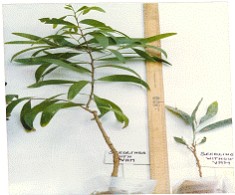
Biofertiliser treated Acacia auriculiformis seedlings
Pteroma plagiophleps, the bag worm has been reported for the first time as a defoliator attacking Rhizophora mucronata a mangrove species and the natural enemies were studied.
Studies on microsporidia affecting forest Lepidoptera revealed the prospect of microsporidians as biocontrol agents for pest management. 65 species of Lepidopterans including 14 pest species were screened for microsporidia and 22 species were found infected. For the first time a Microsporidian pathogen is isolated from the teak defoliator, Hyblaea puera.
Screening of important pests of forestry against different isolates of Metarhizium has helped in documenting the efficacy of the entomopathogen in the development of micoinsecticides for defoliator and termite pest management.
50 fungi were isolated from the different fruit/seed samples were identified. Among these 30 were potential plant pathogens, reported for their pathological effects in several other hosts.
